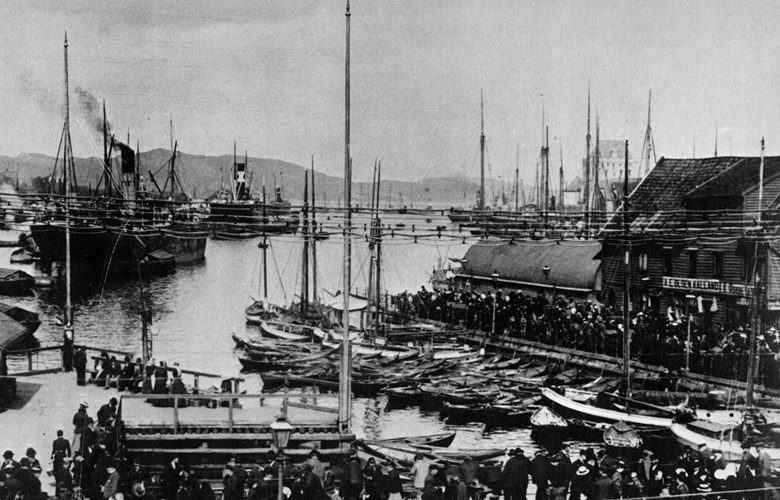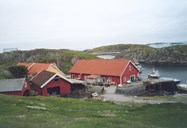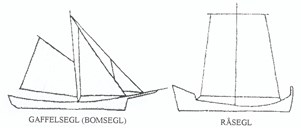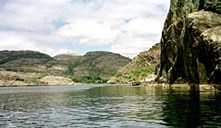Unclear difference between "jekt"/"jakt"
To people along the coast "jekt" and "jakt" have for over 400-500 years been cargo vessels and means of communication between the farm and fishing communities and the market. It seems pointless to make a distinction between "jekt" and "jakt". They were terms used about sloops, often one for the other, also by our best-known boat historian Bernhard Færøyvik. The word "jakt" comes from Dutch. The "jekt" is thought of as a vessel with a high stem and an elevated wing (cabin) on the stern. Yet those called "jakt" also had wings, with two portholes as well. Some "jakts" had gaff sails. They were believed to be the best sailers, but could not carry a high load, because the load would interfere with the sail boom.
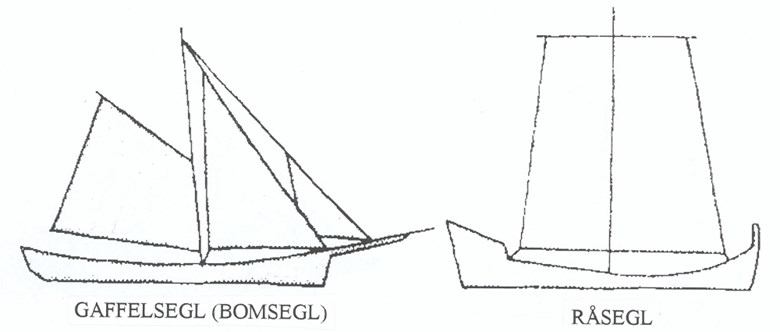
Attractive fair at Lærdal
Every autumn, a fleet of 30-40 sloops and other cargo vessels loaded with the summer produce, sailed eastward into the Sognefjord. People in the innermost communities bought most of the fish. Usually the coast people bartered the fish for grain, butter, cheese, building materials, bark, and wood, and in the 1800s also potatoes. Yet large quantities were sold at the Lærdal fair. People from Valdres and Hallingdal came there to buy fish. At times they bought whole shiploads with cash. The fishermen liked this trade, for cash was always useful. The Lærdal fair must also have been an attractive festival, an attractive destination for the sloops from the west.

People from inner Sogn became islanders
The transport of fresh fish over long distances reduced the fish quality. Therefore it was forbidden to take fresh herring to Bergen. The fishermen had to salt the fish themselves. The speculators arrived later and picked it up, yet the fishermen had herring also for the Sognefjord trade. The county public administrator estimated that in the years 1841-45, around 4000 barrels of salted herring went across the mountains to Valdres and Hallingdal. This herring came from Solund, Gulen, and Sunnfjord.
It happened that young people accompanied the fishermen out to the coast, found a wife, and settled down there. Once two young brothers went west, one to Solund and one to Askvoll. As grown men they met again at the Kinn fisheries.
Winter in the sloop house
Legal documents show that a substantial number of the farms and islands in Solund had a sloop. Place names telling of sloop trade still exist: "Jaktenaustet" (the sloop house) can be found in many places, others are Jaktholmen (the sloop islet), Jaktevika (the sloop bay).
In winter the sloop had to be kept under cover, in order to save moorings and maintenance, and the baling job was avoided. Berhard Færøyvik writes that the Solund sloops were square rigged, only one sloop had gaff sails. There were few carvings. Only the Steinsund sloop had a crown on the rudder, and it was called the Bride. The sloops were most useful for transport of heavy merchandise to and from farms and trading posts. The merchandise could be for barter or for sale, but also for building materials for new houses. These transports were usually made in the summer months when the weather was suitable.
The trip to town could be long
Bergen was important for barter and trade. In several places in Solund there were country stores, albeit quite small. Most of them were owned by town people and operated by apprentices. In some places it was very good business to get hands on the fish trade. The commodities were transported on sloops in both directions. The time the trip took varied between one day and a week, depending on the wind.
Larger sloops had to be used for heavy loads, f. ex. in 1859, for the building materials for the church at Hardbakke. According to tradition, a heavily loaded sloop from Bøfjorden in Sogn brought the wooden materials, which are believed to have been cut at Tveita.

